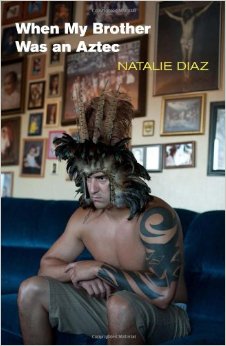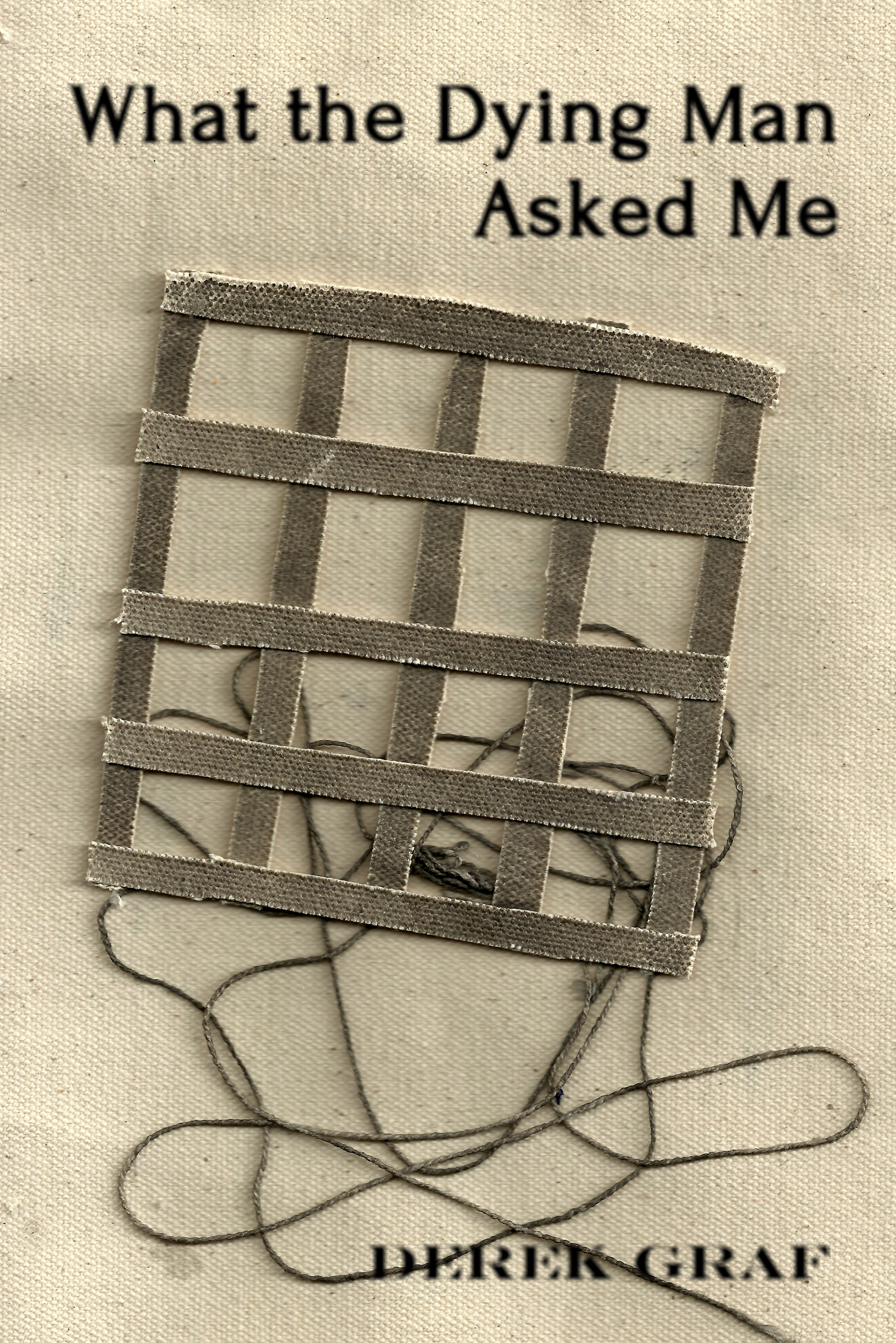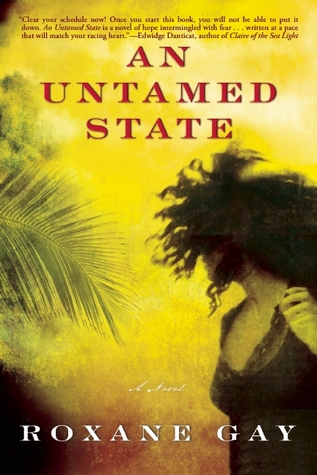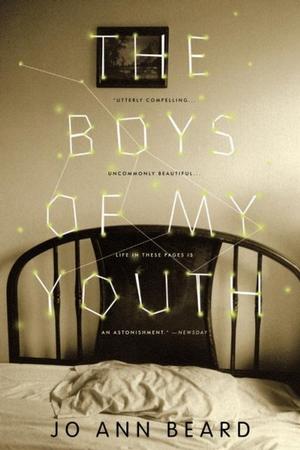What We’re Reading: When My Brother Was an Aztec

When My Brother Was an Aztec by Natalie Diaz (Copper Canyon Press, 2012).
You know that list? That proverbial collection of poets, authors, and titles that you’ve been meaning to get to for ages? Well, move aside those other titles for Natalie Diaz’s debut collection. I finally got around to reading it and when you do, I have a feeling you’ll agree with me when I say that this book is not only fierce but essential to our time.
When My Brothe r Was an Aztec consists of three sections, rich epigraphs, and many different poetic forms. Section one describes a childhood and coming of age on a Reservation with references to Mojave origins and tropes of the American Southwest. Section two is a hard-hitting sequence of poems about the speaker’s brother who is addicted to meth and how it impacts the family. Section three is just as roiling, though subtly so as the poems depict tactile intimacy. To close, Diaz returns to the brother through a zoo scene, and in doing so she recalls early metaphors of violence and consumption.
r Was an Aztec consists of three sections, rich epigraphs, and many different poetic forms. Section one describes a childhood and coming of age on a Reservation with references to Mojave origins and tropes of the American Southwest. Section two is a hard-hitting sequence of poems about the speaker’s brother who is addicted to meth and how it impacts the family. Section three is just as roiling, though subtly so as the poems depict tactile intimacy. To close, Diaz returns to the brother through a zoo scene, and in doing so she recalls early metaphors of violence and consumption.
I would suggest this book as a study in how to write an arresting first line. In the opening poem: “When My Brother Was an Aztec / he lived in our basement and sacrificed my parents / every morning.” And “Prayers or Oubliettes” begins with this stanza:
Despair has a loose daughter.
I lay with her and read the body’s bones
like stories. I can tell you the year-long myth
of her hips, how I numbered stars,
the abacus of her mouth.
Why are these lines so affective? Well, when I look at the rest of the book, I see that Diaz often states the subject right away and often accompanies it with a problem in the form of an image that either surprises or moves. It even works in a poem which resists personal specificity, here the title and opening lines set both the tone and the moment: “I Watch Her Eat the Apple / She twirls it in her left hand, / a small red merry-go-round.” Every poem ‘acts’ like it’s the only poem in the book, so each opening line fights for the reader’s attention in a very appreciative way. And yet, the book is deeply coherent and aware of its own project. In fact, I would look to Diaz’s work as a model for how to delve into a concern both poem by poem and throughout the collection.
While the problem of the book is stated in the very first poem—the speaker’s brother lives eccentrically in an hallucinatory world while his family is maimed again and again by his violence—our understanding of that problem develops throughout the book. It isn’t until the second section that Diaz actually states the brother’s affliction in “How to Go to Dinner with a Brother on Drugs”, but without section one which contextualizes the speaker’s family, origin, and socioeconomic situation the brother might seem flat, simplified as an addict. Instead, Diaz asks the reader to understand the malignancies of poverty on a Native American Reservation, racism, and cultural disappearance. By establishing this context early on, Diaz achieves greater depth in her poems about the brother and even in the love poems in section three. In a more minute way, Diaz also builds meaning through images poem by poem. The image of a lightbulb, for instance, is repeated and each new appearance adds another layer of meaning, until the reader is left with a light bulb glowing so brightly with meaning and haunt that it might never be forgotten. This particular image builds toward the poem “As a Consequence of My Brother Stealing All of the Lightbulbs” but begins with “gutted lightbulbs” in an earlier poem, and then the significance of the image is actually stated in “Downhill Triolets” which precedes “As a Consequence”: “so he made a meth pipe from the lightbulb and smoked himself reeling.” This is an example of careful withholding; each appearance of the lightbulb is complete in itself and accomplishes a certain tone or innuendo which crescendos into a greater knowing for the reader of how impactful a simple light bulb is in the speaker’s world.
The speaker’s world becomes the poems and they are impossible to forget because of that deep personal connection that Diaz cultivates. Towards the end of section three, one poem in particular seems to me to indicate the beating heart of this book, “The Beauty of a Busted Fruit.” The final stanza begins:
Maybe you have grown out of yours—
maybe you no longer haul those wounds with you
onto every bus, through the side streets of a new town,
maybe you have never set them rocking in the lamplight
on a nightstand beside a stranger’s bed, carrying your hurts
like two cracked pomegranates, because you haven’t learned
to see the beauty of a busted fruit, the bright stain it will leave
on your lips, the way it will make people want to kiss you.
It’s stanzas like these that ring true for me, but even more so when accompanied by unapologetic portrayal of humans, human behavior, and social attitudes which are less than perfect.
Diaz draws on her own cultural references such as Rez (Native American Reservation) life and experiences, Catholicism, or family relationships, but she also calls on more globally recognized figures for metaphor- and world- making. Antigone, Sisyphus, Houdini, Jesus, and Barbie enter this text and bring with them layers of contextual significance. Are they familiar? Yes, we’ve read poems alluding to Sisyphean efforts many times before, and we’ve seen Barbie come to life to establish a feminist stance; however, I can confidently say that we had yet to see a Mojave Barbie. In “The Last Mojave Indian Barbie” Diaz personifies America’s favorite doll by re-situating her in a world intent on her adherence to white ideas of “Indian-ness.” I wouldn’t want to read an entire book of Barbie poems, but because it accompanies other intensely personal experiences found, for example, in “Hand-Me-Down-Halloween”, “Why I Hate Raisins”, and “My Brother at 3 A.M.”, the Indian Barbie poem steps back so the reader can take in the darkly humorous critique of the stereotypes surrounding Mojave women.
In addition to Barbie, Diaz invites Borges, Lorca, Harjo, and Whitman (among others) into conversation in this text. Each reference warrants further consideration and, like any good book, sends me off to the shelves where I can rediscover these writers now with the voice of Natalie Diaz beating in my head.
Natalie Diaz writes in English, but also uses words and phrases in Spanish and Mojave—what is your impression of multi-linguistic poetry? If you don’t understand the terms, do you seek them out (on Google) or within the context of the text itself?
What We’re Reading: What the Dying Man Asked Me


What the Dying Man Asked Me by Derek Graf (ELJ Publications, 2015)
Every once in a while, it seems imperative to sit back from the world, just a little bit. In the breath of that recline, what you might discover is the unsepulchered wonder of image and collision. That moment is not unlike Derek Graf’s recent chapbook What the Dying Man Asked Me which echoes the world’s chime of chaos with long lines, impeccable craft, and subtle word play. This publication is an exciting example of the potential for both unity and exploration in chapbook form and also a promising first collection from this rising poet.
The 27 poems in What the Dying Man Asked Me are sequenced with respect to 9 poems which are titled, “My Night as a _____ and a ______.” Beginning with the first poem, “My Night as a Fever and a Wing,” every third poem re-imagines the title with new nouns. All of these poems are epistolary and address a “Father” through couplets. This motif develops a dialogue from the outset of the collection; from the beginning the ‘I’ voice seems determined to confess. This is from “My Night as a Fever and a Wing”:
Father, and I am that shameless color
of wintered blood, a wet animal
walking from the hillside to the street,
and I am a tunnel, a way
out, the cold that drowns
in your teeth and listens, an ill-born.
See how the images bleed into each other? The ‘I’ uses every bit of the body and world around it to depict itself. For this, I would borrow a term for this from the renowned anthropologist, Clifford Geertz—”thick description.” Graf stacks image upon image in his poetry so that each one demands a pause. Yet, at the same time, his deft application of sonic technique allows the reader to appreciate each image in isolation while simultaneously creating harmony with the overall sound of the lines. What’s more, these thick descriptions evoke a certain emotional color, as seen in, “My Night as a Shutter and a Sepal”: “Either the fence or my vision ends / while all the sunflowers in young men are rattled // to nakedness: wide open, like the offered / handshake of your surgeon[…].” Internal, naked sunflowers? That sounds like euphoria to me, but set it up against a handshake with a doctor, and I feel a clammy sense of foreboding, a room lit too well. Throughout the chapbook, Graf juxtaposes images to create emotional tongue-twisters. I don’t think this an “easy” book of poems—the strata and depth of image demand attention and sometimes the friction between the evocative and visual material threatens to lose the reader between lines, but Graf always comes around to scoop us back into the tone and voice of each poem.
In between the “My Night as”-poems is a variety of poetic form and meditative concern, though a similar palate persists throughout the collection. I appreciate the book’s tight focus, recurring obsession with the night, awareness of setting (throughout, we see Florida, Charlotte, Kansas, Oklahoma), and application of formalism. Especially given the brevity of chapbooks in general, the coherence here is especially remarkable in light of the variation in tone and form. It would seem that, at times, the poet is almost absent from the poem; the poet’s eye sits at the border between abstraction and image and roves between the two obsessively. What the Dying Man Asked Me is a plague of intrigue that goes something like this: “It’s time for you to invite me in. I’m as empty as a corner: / the odd man out in a company of clones,” (the first lines of “On Invisibility”).
The final poem, “Pantoum for Cigarettes (Alternate Ending),” might be one of my favorites. Here Graf uses the form to give and then to take away; the repeated lines sometimes build, but often refute earlier versions of themselves. For example:
[…] It’s very hard to figure this out:
a poet named Allison reads my letters and unsigned postcards
from places where I drink too much and forget my hands—
she writes about Russia with big Russian words
and secretly opens my drunken letters, although—
I should have said—she also censors my drunken letters.
She writes Russian poems with tiny Russian words
and colors the night with paint that I can’t see, and as I said—
what am I saying?—she never reads my drunken letters,
Again, we see here a version of playfulness with language. The poet plays with the repetition to create a smoke-and-mirror effect where meaning, and the speaker’s intent, shift like a mirage. In my opinion, this is a successful exploitation of the pantoum’s cheeky potential. This poem is about what is said and not said, authorship and lies… and it makes me think of the slow burn of the future ever-coming toward the face but never burning through the filter of the present.
This poem also makes for a strong final move in the collection. Many a creative writing teacher has said the last lines of a poem should be “an opening up,” and that’s exactly what I see happening in “Pantoum for Cigarettes.” Graf calls out the constant becoming of his craft: “I’ll always write you letters / with my static hands but I’m still working out the lines / to “It Looks Like We’re in Love again,” and “How This Burns.” I read this as a promise to a lover but also to a reader—maybe “Allison,” perhaps a cigarette, maybe me. In any case, it would seem that the final poem of What the Dying Man Asked Me is just the beginning of what’s sure to be more promising work from Derek Graf.
What We’re Reading: An Untamed State by Roxane Gay
 An Untamed State by Roxane Gay (Black Cat, 2014)
An Untamed State by Roxane Gay (Black Cat, 2014)
It’s the middle of the day, and I’m having a drink. I need one after finishing An Untamed State. Roxane Gay brought me to tears more times in the reading of her novel than I’ve cried in the last six months. (I don’t know if my dog would concur, but he can’t count, so take my word for it.) Let’s skip the over-used modifiers—heartbreaking, brutal, haunting—and be honest. Here is a story that explains the extent of the awful truth that “Girl children are not safe in a world where there are men.”

In An Untamed State Mirielle and Michael Jameson and their son visit her wealthy parents in Haiti. Mirielle is captured by a gang in the ransom business and, for the next thirteen days, subjected to nightmares of flesh and dehumanizing violence while her husband futilely attempts to convince Mirielle’s father to pay the ransom and return her to safety. The majority of the story is told in first-person from Mirielle’s perspective, with intermittent chapters in the omniscient voice from Michael’s point of view. The novel takes place in Haiti, Miami, and Nebraska. Gay takes special care to note the privilege of her protagonist’s starting point; in effect, she shows us the fairy tale, then dismantles it, and brings her readers to their knees in empathetic protest for Mirielle, the former princess.
Characterization in this novel depends on the protagonist’s point of view, almost exclusively. At first there are many names, many faces. Perhaps it is somewhat difficult to keep track; however, we could read that sense of bewilderment as an emotional foreshadowing of its own. Michael, Mirielle’s Nebraska-born-and-bred husband, does not speak the language and he has no allies to help him find his wife. Michael is lost in a web of negotiation and decorum. Ultimately, however, the names slip away in the same way Mirielle’s former life does. We’re left with a small cohort of the characters who love her most, the people who have made an attempt not to understand, but to accept the trauma she survives.
Gay complicates the idea of personal strength by showing how it functions differently in different contexts. She foreshadows heavily in chapters three, four, and five about Mirielle’s father’s resolute determination, his “ruthlessness.” He’s a self-made man in America but beyond wealthy in the country of his birth—Haiti. He met his wife, Mirielle’s mother in America; they loved each other impenetrably in their own ways. And it is within their family, that the readers see wide variance in love. Gay juxtaposes the great love of Mirielle’s father for her mother with her father’s love for her:
“That night […] my parents spent most of their time sitting with their foreheads touching in their own world. My parents are not warm people. They love hard and deep but you have to work to understand the exact nature of that love, to see it, to feel it. That day was the first time I realized my parents loved each other more than they loved us though I couldn’t know then the price I would pay for that love.”
Sebastien Duval raised his three children to keep stiff upper lips and exceed his aerial expectations. We learn, through Mirielle’s perspective, of the way she (his youngest daughter) was most susceptible to his intolerance of weakness, and coached herself to excel at all things and to be unyielding with her will. All this before she faced death and torture. After she is kidnapped, Mirielle speaks of her father’s stubbornness proudly to her captors, even as she comes to understand it is the very reason she is still imprisoned. At the end of the novel, it is this final question, how could a father abandon his daughter?, that drives the plot. Mirielle and Michael return to Port-au-Prince for one last time. She has been through surgeries, therapy, and hell just to resume a socially normal life, but she returns to ask her father why he waited thirteen days to pay for her and to tell him the horrible truth of her kidnap.
“I wanted to tell him I would never forgive him, that his impossible choice had killed all my love for him, but when I looked into his face, all I saw was an old man who made a terrible, weak choice and had to live with it for what remained of his life. He did not deserve the truth of how I died.
I looked at my father, the man who had been the uncompromising measure for all things in my life for so long. There was still good in me. He did not need to know the truth for me to feel more alive.”
The prose is fast. This is the kind of book you read too quickly, and then pick up again immediately after you’ve finished. I typically avoid such traumatic subject matter, but, in my opinion, Gay treats her readers as tenderly as she can with material of this violent nature. Instead of belaboring the physical torture, she focuses on Mirielle’s internal resolve to supersede injury:
“I made myself forget for as long as I could […] The memory of my life, the weigh of it, threatened to break my body more than any man could. I needed to be no one so I might survive.”
Throughout the novel, the characters’ pains are tempered with this cadence of resolve. Over and over, Mirielle is told to be strong, and this advice takes on a very different tone as we learn what it means to actually face torture with strength. Mirielle undoes who she was and becomes “no one;” she emerges from her prison alive, but “a fucking mess.” As a result, the most emotionally intense parts of this novel occur in the aftermath; the irreparable damage to Mirielle’s body and mind are not clear until we see her in the light of her former home:
“I was the kind of hungry I did not know was possible but in its way, the hunger felt good. It was a comfort to be so empty. I had to hold on to that emptiness.”
It is here, in the uncomfortable and sometimes hopeless space of healing where true love prevails. Her mother-in-law, of all people, is the person who coaxes Mirielle back into the life she once loved.
What surprises me most about this novel, is that it steers us away from the harsh rationale that so often accompanies human trauma and sacrifice. Mirielle’s father says to her, “In impossible circumstances one is faced with impossible choices.” Gay does not end the book with some institutionalized pardon of the “necessary evil” of violence, of rape. Instead she, unrelentingly, shows the reader the bottom line for Mirielle and her family, and what this bottom line says to me, at least, is that one life is too many. Gay is saying that women are used as collateral, universally, and collateral damage is unacceptable.
What have you read lately that shook you to the core?

 The Boys of My Youth by Jo Ann Beard (Little, Brown & Company 1998)
The Boys of My Youth by Jo Ann Beard (Little, Brown & Company 1998)




